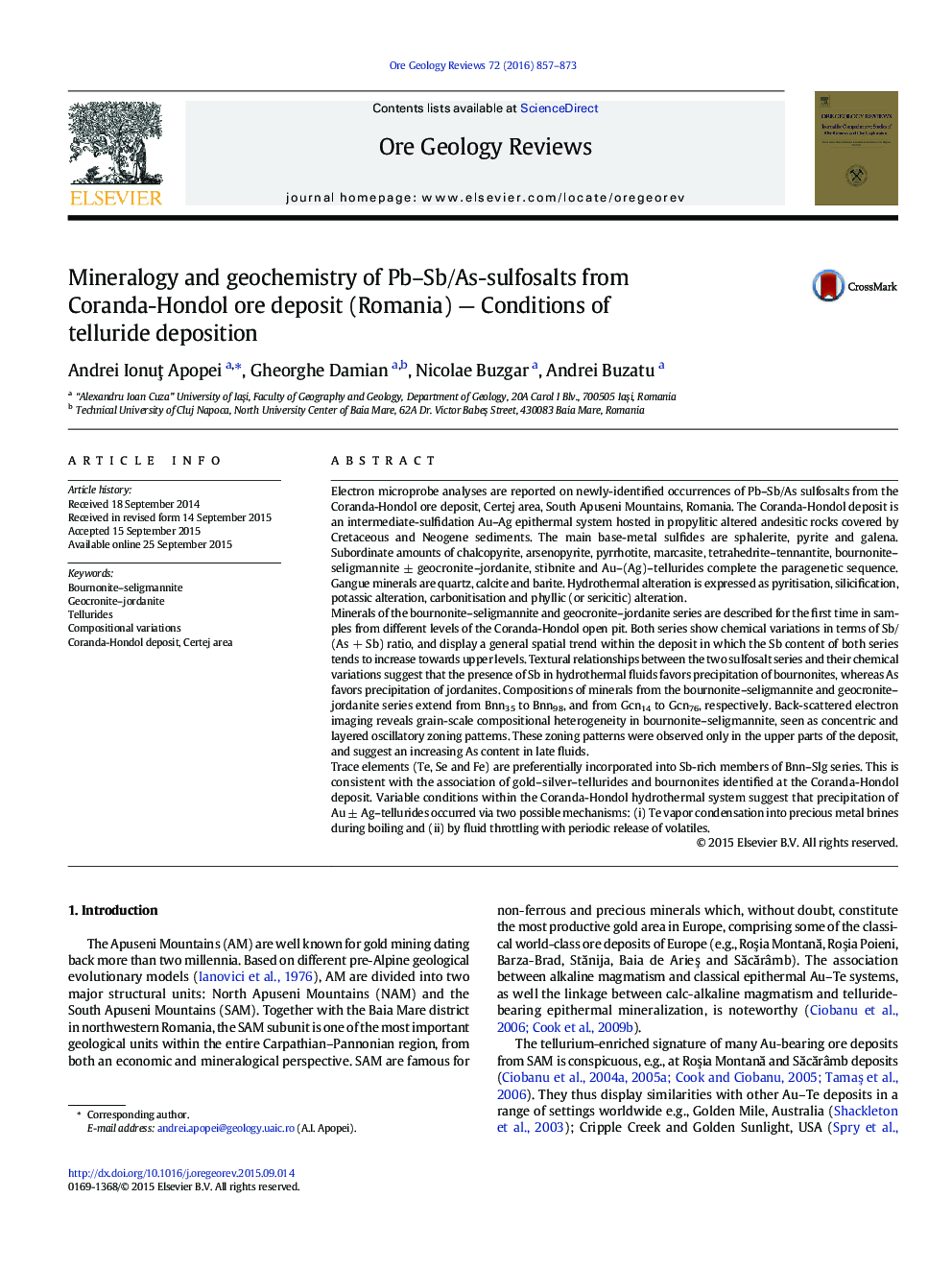| Article ID | Journal | Published Year | Pages | File Type |
|---|---|---|---|---|
| 6435807 | Ore Geology Reviews | 2016 | 17 Pages |
â¢Samples from Coranda-Hondol ore deposit were analyzed using EPMA.â¢New occurrences of Pb-Sb/As-sulfosalts are identified and described.â¢Bournonite-seligmannite series shows compositional zonation within a single grain.â¢Bournonite minerals are associated with Au ± Ag-tellurides.
Electron microprobe analyses are reported on newly-identified occurrences of Pb-Sb/As sulfosalts from the Coranda-Hondol ore deposit, Certej area, South Apuseni Mountains, Romania. The Coranda-Hondol deposit is an intermediate-sulfidation Au-Ag epithermal system hosted in propylitic altered andesitic rocks covered by Cretaceous and Neogene sediments. The main base-metal sulfides are sphalerite, pyrite and galena. Subordinate amounts of chalcopyrite, arsenopyrite, pyrrhotite, marcasite, tetrahedrite-tennantite, bournonite-seligmannite ± geocronite-jordanite, stibnite and Au-(Ag)-tellurides complete the paragenetic sequence. Gangue minerals are quartz, calcite and barite. Hydrothermal alteration is expressed as pyritisation, silicification, potassic alteration, carbonitisation and phyllic (or sericitic) alteration.Minerals of the bournonite-seligmannite and geocronite-jordanite series are described for the first time in samples from different levels of the Coranda-Hondol open pit. Both series show chemical variations in terms of Sb/(As + Sb) ratio, and display a general spatial trend within the deposit in which the Sb content of both series tends to increase towards upper levels. Textural relationships between the two sulfosalt series and their chemical variations suggest that the presence of Sb in hydrothermal fluids favors precipitation of bournonites, whereas As favors precipitation of jordanites. Compositions of minerals from the bournonite-seligmannite and geocronite-jordanite series extend from Bnn35 to Bnn98, and from Gcn14 to Gcn76, respectively. Back-scattered electron imaging reveals grain-scale compositional heterogeneity in bournonite-seligmannite, seen as concentric and layered oscillatory zoning patterns. These zoning patterns were observed only in the upper parts of the deposit, and suggest an increasing As content in late fluids.Trace elements (Te, Se and Fe) are preferentially incorporated into Sb-rich members of Bnn-Slg series. This is consistent with the association of gold-silver-tellurides and bournonites identified at the Coranda-Hondol deposit. Variable conditions within the Coranda-Hondol hydrothermal system suggest that precipitation of Au ± Ag-tellurides occurred via two possible mechanisms: (i) Te vapor condensation into precious metal brines during boiling and (ii) by fluid throttling with periodic release of volatiles.
Graphical abstractDownload full-size image
